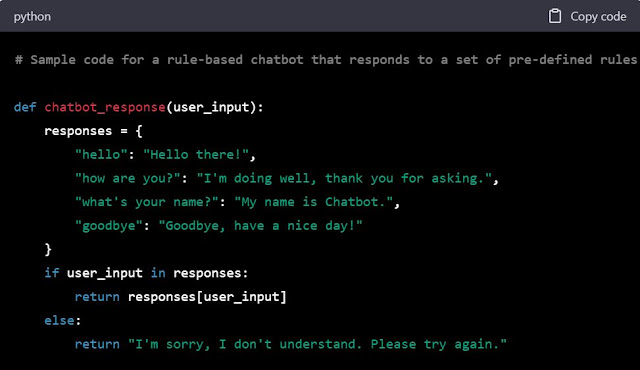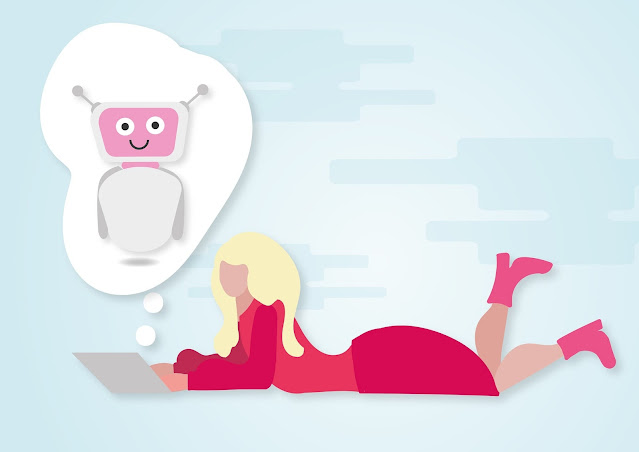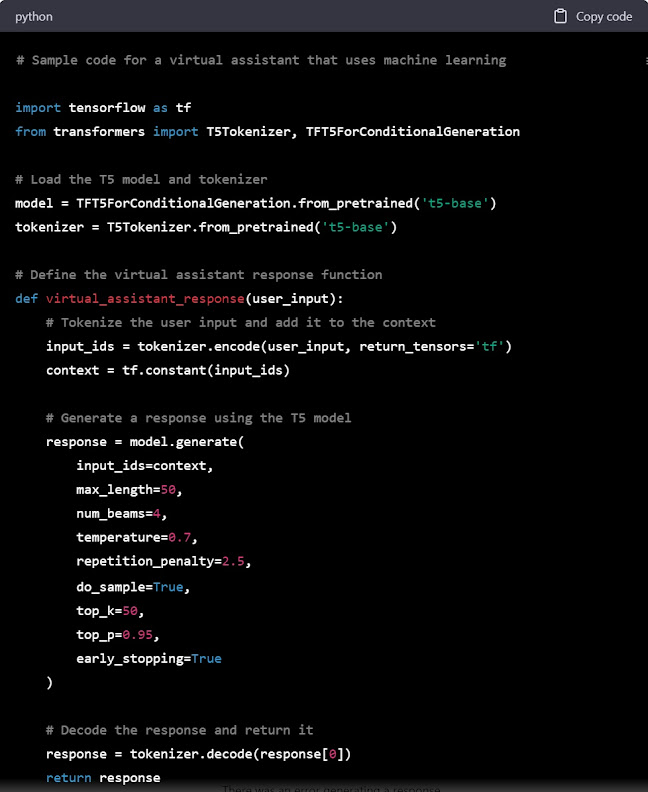Loading ad…
Chatbots have been around for quite some time, but their popularity has skyrocketed in recent years due to advancements in artificial intelligence and natural language processing technology. Chatbots are computer programs designed to simulate human conversation, and they can be used in a variety of applications, from customer service to virtual assistants. In this article, we'll take a closer look at chatbots, their history, and the different types of chatbots that are available. We'll also discuss the steps involved in building a chatbot and provide some example code to get you started. Whether you're a business owner looking to automate customer service or a developer interested in building your own chatbot, this article has something for everyone.Table of Contents:
I. Introduction II. History of Chatbots III. Types of Chatbots IV. Advantages and Disadvantages of Chatbots V. How to Make a Chatbot A. Define the Purpose and Goals of Your Chatbot B. Choose the Right Platform for Your Chatbot C. Design the Conversation Flow and User Interface D. Train and Test Your Chatbot VI. Conclusion
I. Introduction
In recent years, chatbots have become increasingly popular as a means of interacting with customers, providing customer support, and automating tasks. A chatbot is a computer program designed to simulate conversation with human users, using natural language processing (NLP) and artificial intelligence (AI) technologies. Chatbots can be used for a wide range of purposes, from answering frequently asked questions to book appointments, making purchases, and more. In this article, we'll explore the history of chatbots, the types of chatbots, and how to make them.II. History of Chatbots
Chatbots have been around in some form since the 1960s, but it wasn't until the 1990s and early 2000s that they began to be used commercially. The first chatbot, called ELIZA, was developed in the 1960s by MIT professor Joseph Weizenbaum. ELIZA was designed to simulate a conversation between a patient and a therapist, using a simple rules-based system. Over the years, chatbots have become more sophisticated, incorporating NLP and AI technologies to improve their ability to understand and respond to natural language.III. Types of Chatbots
There are several different types of chatbots, each with its own strengths and weaknesses. Some of the most common types include:Rule-based chatbots: These chatbots use a set of pre-programmed rules to understand and respond to user input. Rule-based chatbots are relatively simple and inexpensive to build, but they are limited in their ability to understand complex requests.

AI-powered chatbots: These chatbots use machine learning algorithms to improve their ability to understand and respond to user input over time. AI-powered chatbots are more sophisticated than rule-based chatbots, but they require more development time and data to train effectively.

Virtual assistants: These chatbots are designed to provide personalized assistance to users, using machine learning to understand their preferences and needs. Virtual assistants are typically more complex than other types of chatbots, and they require significant development time and resources to build.
"Note that these examples are for illustrative purposes only and may not be complete or functional without additional code and configuration."
A. Define the Purpose and Goals of Your Chatbot Before you start building your chatbot, you'll need to define its purpose and goals. What problem is your chatbot designed to solve? What tasks will it be able to perform? What kind of user experience do you want to create?
B. Choose the Right Platform for Your Chatbot There are several different platforms you can use to build your chatbot, including third-party chatbot builders like BotStar and Chatfuel, as well as open-source chatbot frameworks like Dialogflow and Rasa. You'll need to choose the platform that best fits your needs and budget, based on factors like ease of use, customization options, and scalability.
C. Design the Conversation Flow and User Interface Once you've chosen your platform, you'll need to design the conversation flow and user interface for your chatbot. This involves creating a set of responses for different user inputs, as well as designing the chatbot's visual appearance and user interface.
D. Train and Test Your Chatbot Once you've designed your chatbot, you'll need to train it using a dataset of user interactions. This involves teaching your chatbot how to respond to different user inputs, and fine-tuning its algorithms to improve its accuracy and effectiveness. You'll also need to test your chatbot thoroughly, using real-world user interactions to identify and fix any issues or errors.
IV. Advantages and Disadvantages of Chatbots
Chatbots offer several advantages over traditional customer support methods, including 24/7 availability, faster response times, and the ability to handle multiple requests simultaneously. However, chatbots also have some disadvantages, including their limited ability to understand complex requests, their potential for errors and misunderstandings, and their inability to provide the same level of personalization and empathy as a human customer support representative.V. How to Make a Chatbot
If you're interested in building a chatbot, there are several steps you'll need to follow:A. Define the Purpose and Goals of Your Chatbot Before you start building your chatbot, you'll need to define its purpose and goals. What problem is your chatbot designed to solve? What tasks will it be able to perform? What kind of user experience do you want to create?
B. Choose the Right Platform for Your Chatbot There are several different platforms you can use to build your chatbot, including third-party chatbot builders like BotStar and Chatfuel, as well as open-source chatbot frameworks like Dialogflow and Rasa. You'll need to choose the platform that best fits your needs and budget, based on factors like ease of use, customization options, and scalability.
C. Design the Conversation Flow and User Interface Once you've chosen your platform, you'll need to design the conversation flow and user interface for your chatbot. This involves creating a set of responses for different user inputs, as well as designing the chatbot's visual appearance and user interface.
D. Train and Test Your Chatbot Once you've designed your chatbot, you'll need to train it using a dataset of user interactions. This involves teaching your chatbot how to respond to different user inputs, and fine-tuning its algorithms to improve its accuracy and effectiveness. You'll also need to test your chatbot thoroughly, using real-world user interactions to identify and fix any issues or errors.
VI. Conclusion
Chatbots are a powerful tool for businesses and organizations of all sizes, offering a fast and convenient way to interact with customers and automate routine tasks. By understanding the history of chatbots, the different types available, and the steps involved in building one, you can create a chatbot that meets the needs of your users and helps you achieve your business goals. Whether you're building a simple rule-based chatbot or a complex AI-powered virtual assistant, there's never been a better time to get started with chatbot development.
Loading ad…
Loading ad…









0 Comments